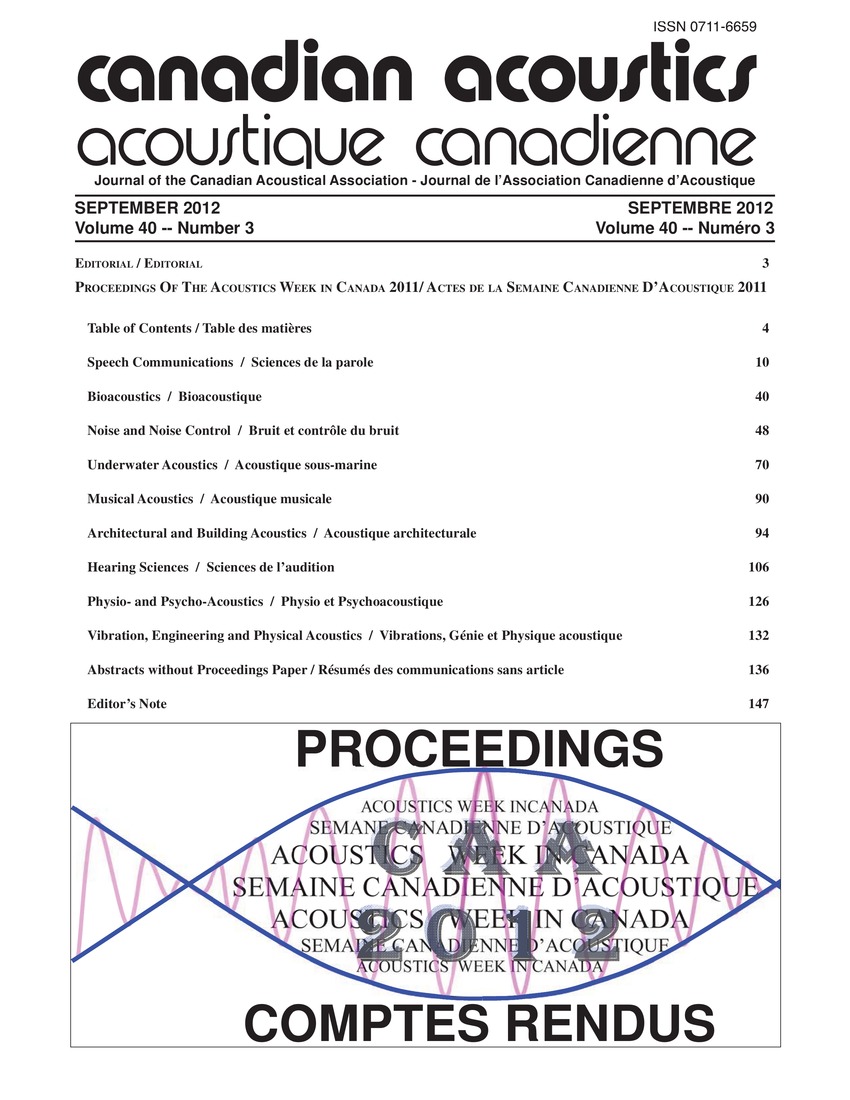Nonlinear geoacoustic inversion via parallel tempering
Keywords:
Reverberation, Scattering parameters, Tempering, Acoustic reverberations, Data errors, Geoacoustic inversion, Geoacoustics, Inversion problems, Marginals, Metropolis-Hastings samplings, Multi-modality, Multimodal problems, Parallel tempering, Range-independent, Sediment layers, Standard deviation, Unknown parametersAbstract
The method of parallel tempering is applied to achieve efficient and effective sampling of a particularly challenging multi-modal problem involving the inversion of acoustic reverberation data for geoacoustic and scattering parameters. Metropolis-Hastings sampling (MHS) and parallel tempering are compared for Bayesian geoacoustic inversion of simulated (noisy) reverberation data. A range-independent seabed model is assumed for the reverberation inversion problem in which the seabed is represented by an upper sediment layer of thickness 5m, sound velocity 1470 m/s, density 1.4 g/cm3, and attenuation 0.5 dB/wavelength. The standard deviation of the data errors 1dB is also considered an unknown parameter in the inversion. Considering the parallel-tempering results, it is found that the multi-modality of the joint marginals are mapped out far better using parallel tempering samples using MHS. There is little practical difference in results for different there is little practical difference in results for different.Additional Files
Published
How to Cite
Issue
Section
License
Author Licensing Addendum
This Licensing Addendum ("Addendum") is entered into between the undersigned Author(s) and Canadian Acoustics journal published by the Canadian Acoustical Association (hereinafter referred to as the "Publisher"). The Author(s) and the Publisher agree as follows:
-
Retained Rights: The Author(s) retain(s) the following rights:
- The right to reproduce, distribute, and publicly display the Work on the Author's personal website or the website of the Author's institution.
- The right to use the Work in the Author's teaching activities and presentations.
- The right to include the Work in a compilation for the Author's personal use, not for sale.
-
Grant of License: The Author(s) grant(s) to the Publisher a worldwide exclusive license to publish, reproduce, distribute, and display the Work in Canadian Acoustics and any other formats and media deemed appropriate by the Publisher.
-
Attribution: The Publisher agrees to include proper attribution to the Author(s) in all publications and reproductions of the Work.
-
No Conflict: This Addendum is intended to be in harmony with, and not in conflict with, the terms and conditions of the original agreement entered into between the Author(s) and the Publisher.
-
Copyright Clause: Copyright on articles is held by the Author(s). The corresponding Author has the right to grant on behalf of all Authors and does grant on behalf of all Authors, a worldwide exclusive license to the Publisher and its licensees in perpetuity, in all forms, formats, and media (whether known now or created in the future), including but not limited to the rights to publish, reproduce, distribute, display, store, translate, create adaptations, reprints, include within collections, and create summaries, extracts, and/or abstracts of the Contribution.


